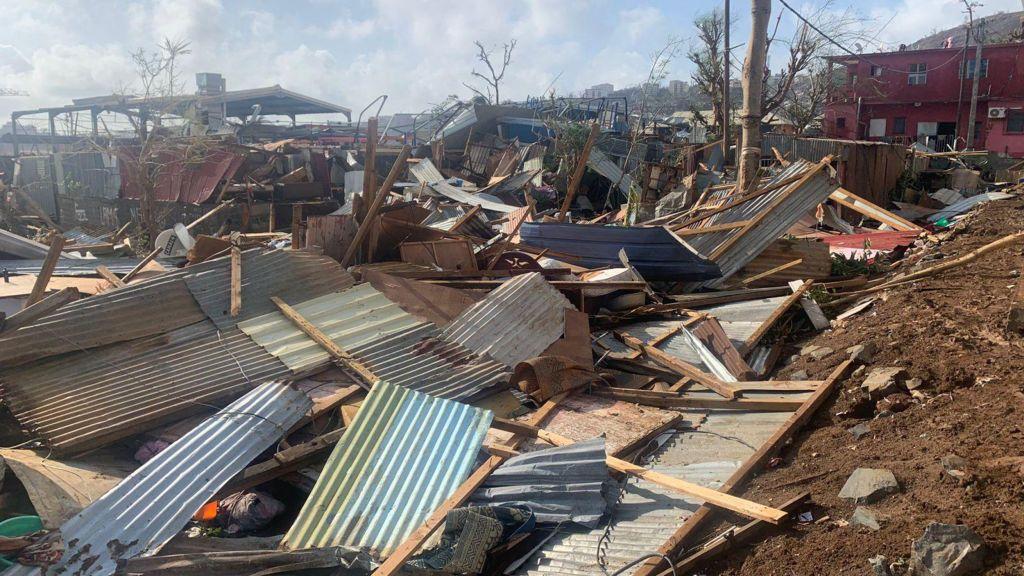Cyclone Chido has caused devastating destruction in Mayotte, a French territory in the Indian Ocean, with local officials predicting a death toll that could reach several hundred. The cyclone, which struck on Saturday with wind gusts exceeding 225 km/h (140 mph), has left entire communities flattened and significant damage in its wake. While initial reports indicated at least 11 fatalities with hundreds injured, the Prefect of Mayotte, Francois-Xavier Bieuville, warned that the actual number of casualties may be much higher, possibly in the thousands, as the situation continues to be assessed. As France mobilizes resources to aid the island, President Emmanuel Macron expressed the nation’s commitment to support Mayotte in its recovery efforts.
The impact of Cyclone Chido was profound, especially considering the living conditions of many residents in Mayotte, where a large portion of the population resides in makeshift housing made from sheet metal. Tens of thousands have lost their homes as a result of the cyclone, which has also disrupted basic services such as electricity, water, and internet access. French officials have reported that the local airport, Pamandzi, sustained significant damage, most notably to its control tower, hampering transportation and rescue efforts. In response to the destruction, Paris has dispatched military transport planes carrying emergency supplies and personnel to assist with recovery operations.
Emergency services have faced serious challenges following the cyclone, as many responders have been unable to access affected areas due to severe damage and disrupted communications. The head of Mayotte’s firefighters’ union reported that even established emergency infrastructures were overwhelmed, and responders found themselves without essential services like mobile communication, severely hindering rescue efforts. Interior Minister Bruno Retailleau has reached out to the people of Mayotte, affirming the commitment of the government to ensure safety and provide assistance in the aftermath of the disaster.
Assessing the cyclone’s severity, French Prime Minister François Bayrou remarked that the event was unprecedented in Mayotte’s recent history, with the last comparable storm having occurred in 1934. The island was placed under a strict lockdown, initially categorized as a purple alert, the highest level of emergency response, which has since been downgraded to allow emergency personnel to operate more freely. The prompt activation of emergency services and the deployment of civil security personnel underline the urgency of the situation and the government’s focus on immediate humanitarian relief.
Despite the cyclone’s passage, questions remain regarding the extent of the damage as the storm moves away from Mayotte, crossing the Mozambique Channel. The cyclone has continued to affect neighboring regions, particularly the coastal city of Pemba, where heavy rains and winds reaching up to 185 km/h (115 mph) have resulted in flooding and further destruction. Reports of damaged infrastructure and uprooted trees have begun to surface on social media, painting a grim picture of the aftermath as the weather system advances inland, with heavy rains projected for nearby provinces.
The ongoing crisis has highlighted the vulnerabilities faced by island communities like Mayotte, which struggles with socio-economic challenges that exacerbate the impact of natural disasters. As the French government coordinates its response and international assistance is mobilized, there is hope that recovery efforts will prioritize rebuilding infrastructure and providing necessary aid to those who have lost their homes and loved ones. The tragedy of Cyclone Chido serves as a stark reminder of the destructive power of nature and the need for robust emergency preparedness in regions susceptible to such severe weather events.

